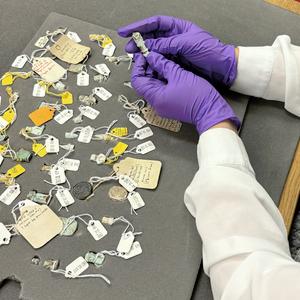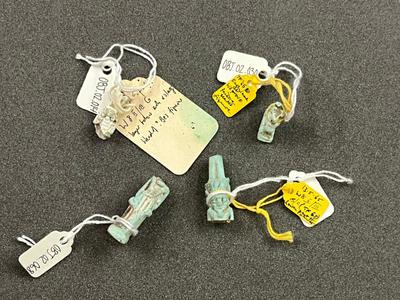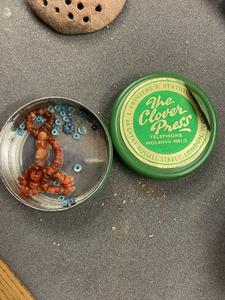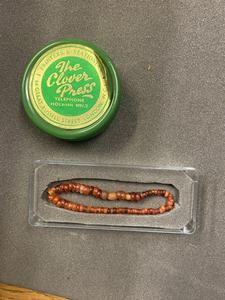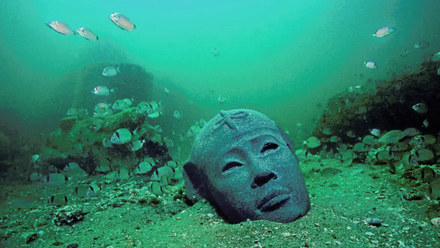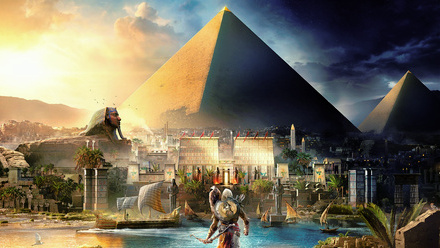Activating Collections for the Future: cataloguing and rehousing the EES artefacts
Thanks to the 2024: Future plans for future generations appeal, the Egypt Exploration Society was able to fund internships to assist with the packing and relocating of its collections in advance of the Building the Future campaign. This internship focused on collections of artefacts in the EES collections, which were catalogued and rehoused over six weeks. In this collection highlight, Maia Nolan will provide an overview of these collections future research opportunities following their accession.
Overview of Collections
This internship set out to inventory artefacts in the EES collections so they could be accessioned, numbered, and rehoused. This project encompassed nine collections (EES.OBJ.02-.10), each varying in size from one object to almost 250 objects. Altogether, about 350 objects have been catalogued and accessioned. The increased accessibility of these objects in their new housing now provides the opportunity for research and engagement using the collections.
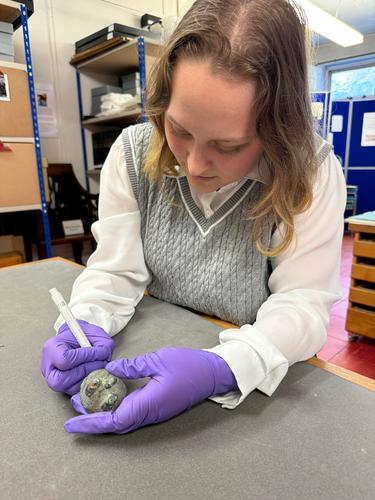
Maia Nolan labelling EES.OBJ.02.089, a copper alloy sceptre head with feet and a tail on top.
These collections have been integrated into the Society’s collections under the accession heading: OBJ. Within OBJ there are currently ten collections. Each collection has been divided according to provenance, with each collection denoting a separate donation or source. Collection EES.OBJ.01 has been reserved for Oxyrhynchus materials, with the first collection in this project starting with EES.OBJ.02.
Buto and abroad: Collection EES.OBJ.02
The first and largest collection came from the estate of Elsa Guignard who, while still Elsa Coult, was a student of Dr Veronica Seton-Williams. She assisted Seton-Willaims on her 1960 and 1964 Tell Rifa’at excavations in Syria and served as Assistant Field Director of the EES excavations at the Delta site of Buto, also known as Tell Fara’in, under Seton-Williams in 1964-65. The collection is mainly comprised of small finds and samples from Buto, most being from the excavation in 1965, although a few date to either the 1964 survey or later 1966-68 seasons according to their labels. This 1968 season marked the end of Seton-Williams’ work at the site.
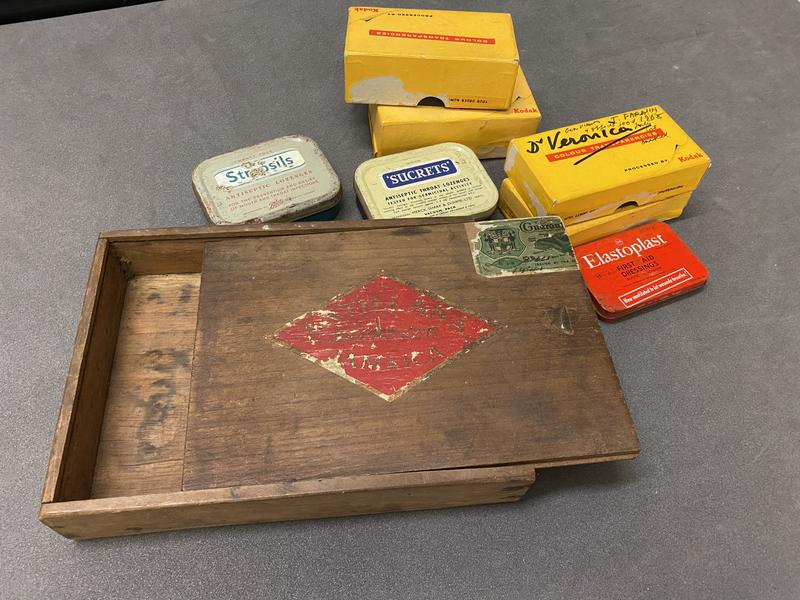
Ephemera which housed the artefacts in EES.OBJ.02 including a wooden cigar box, medical supply tins and film boxes.
Until this rehousing project, most of the artefacts were housed in their original containers from the site, such as Kodak film boxes and tins of medical supplies. Recent projects at the Petrie Museum of Egyptian and Sudanese Archaeology have shown the importance of ephemera like these and so the containers have also been recorded and retained. Their association with each object is reflected both in its own numbering system and recorded in the inventory of each object.
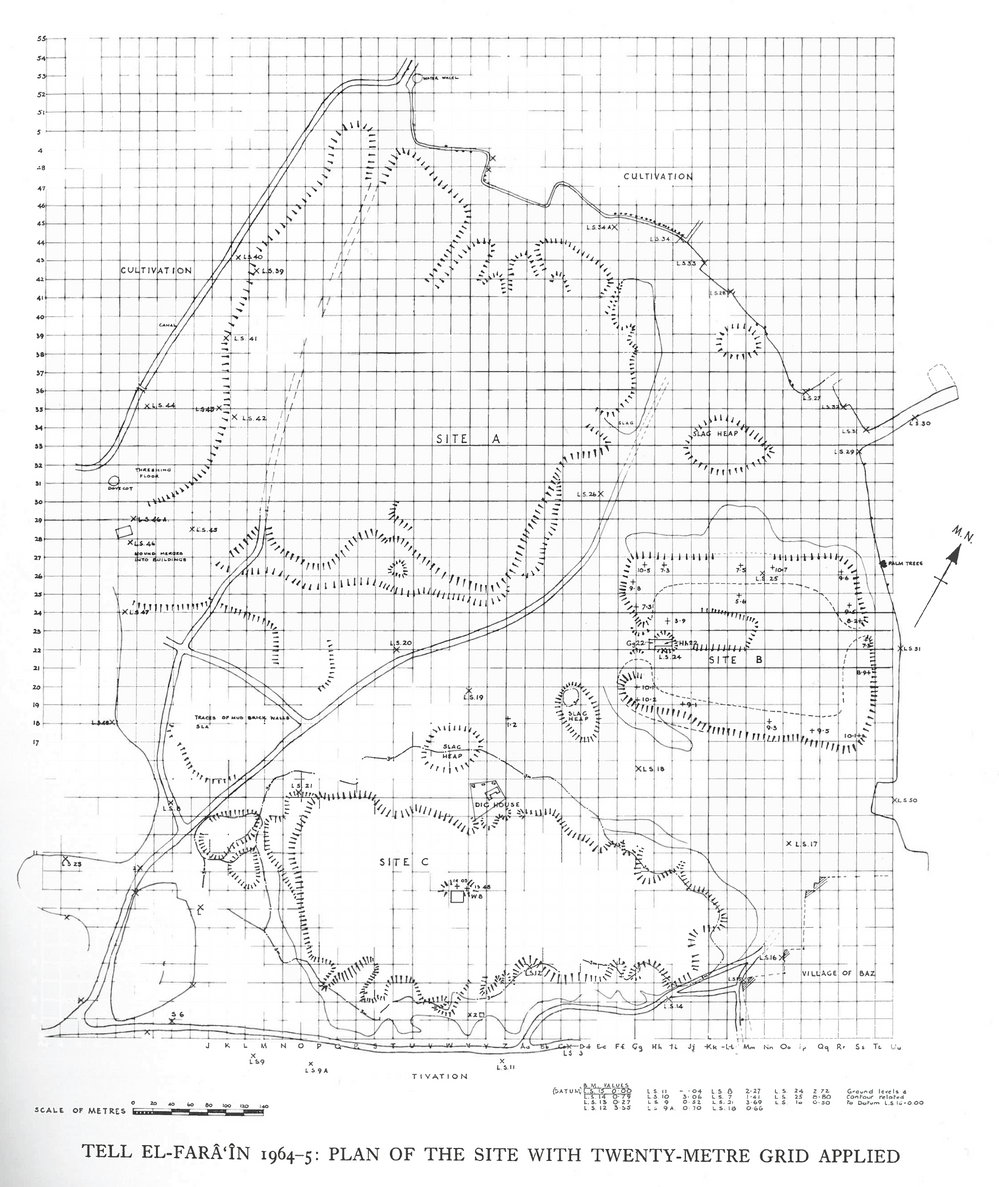
Map from JEA 51 (1965) article on Tell Fara’in 1964-1965 expedition with grid lines dividing up site. See W8, Gg22 and Hh22 for season’s excavation zones. (Click here to download a PDF file of this map).
The collection includes small figurines, amulets and coins. There are also many pieces of rock and slag as well as small sherds of vessels. Most of these objects retain their excavation information, whether through their labels or their original box markings. The objects are labelled by W8, Gg22, or Hh22. These correspond with trenches in the excavation’s grid plan, which can be seen in the Journal of Egyptian Archaeology (JEA) report on the season by Seton-Willaims. The most common of these is W8, denoting that the material is from site C, identified as a temple complex. This offers the opportunity for renewed research into this site and re-examination of the excavation itself.
A tray of objects from the Buto excavation, and a selection of amulet fragments: EES.OBJ.02.068, EES.OBJ.02.014, EES.OBJ.02030, EES.OBJ.02018.
As well as the material from Buto, this collection also contained several objects identified as originating from other sites in Egypt and Syria. The Syrian material seem to be from Seton-Williams’ work at Tell Riffa’at, based on the excavation dates and site locations.
Finally, the collection also includes a number of amulets, beads, scarabs, Sons of Horus, Wedjat eyes and even small shabtis from the collection of Veronica Seton-Williams, which do not seem to relate to Buto. These artefacts have all been rehoused into trays for access and viewing.
Egypt Ancient and Medieval: Collection EES.OBJ.05
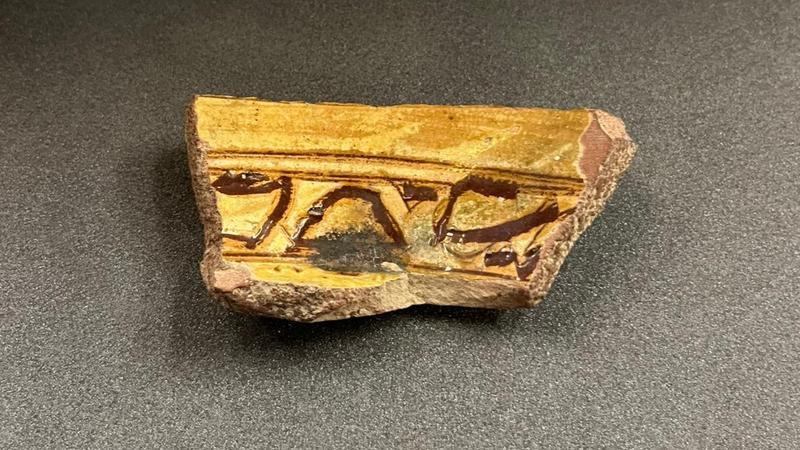
One of several pieces of Islamic pottery from Fustat in the collection from Margaret Drower, EES.OBJ.05.018.
Another collection came to the EES from the estate of Egyptologist Margaret Drower alongside other materials. This collection includes fragments of material from Fustat (early Cairo), including colourful Islamic pottery sherds and fragments of vibrant glass. This a reminder that the charitable remit of the EES extends into the medieval history of Egypt. The other half of this collection includes ancient Egyptian objects, such as a set of small pottery cups identified as originating from Abusir dated to the Fifth Dynasty and a bracelet of carnelian beads. The collection also has several vessels of various forms.
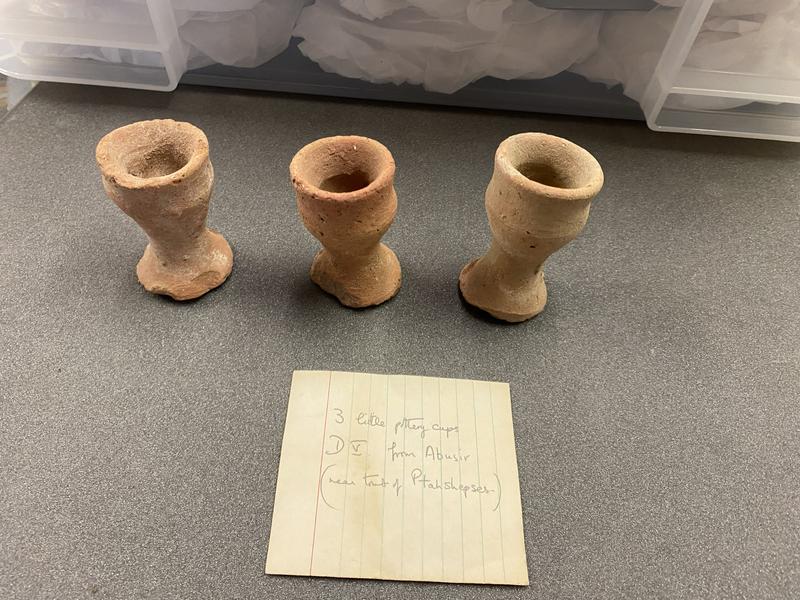
Three small cups, EES.OBJ.05.022-.024, from Margaret Drower with associated label identifying them.
The necessity of this rehousing project is emphasised by objects such as EES.OBJ.05.029. This object seems to be a type of ceramic brick or architectural piece with features that appear to be figures on either side of its corner. This block is difficult to study as it had been flaking in its original container. However, this rehousing project has allowed it to be placed in safer housing and offers the opportunity for it to be conserved and stabilised in the future.
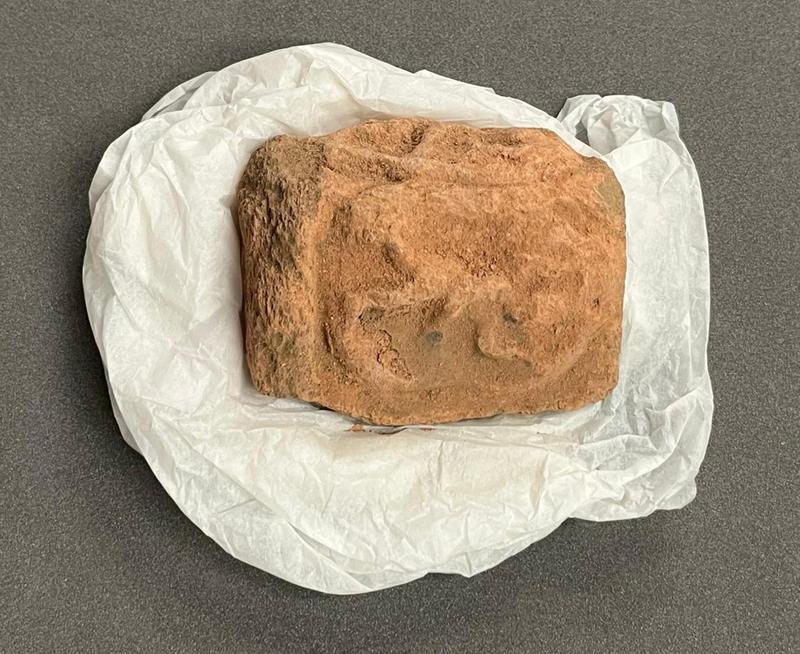
EES.OBJ.05.029 once removed from old housing, which has now been stored separately from the collection in order to prevent damage to its unstable surface.
Rehousing the Collections
The objects were primarily rehoused using acid free tissue paper and plastazote. Any loose labels relating to the objects were placed in acid-free sleeves. More complete small finds, such as many of the amulets, were rehoused into plastazote trays for ease of viewing, access, and engagement. The rest of the objects are stored with tissue paper sleeves and tissue paper “puffs” in larger boxes to facilitate transportation and storage.
EES.OBJ.02.030 and EES.OBJ.02.031 in their original housing and the bracelet of Carnelian beads (EES.OBJ.02.031) in its new storage.
Future of the Collection
There are many more objects to be explored in these collections, by both researchers and visitors alike. For example, these collections offer a chance for renewed research into Buto. As these materials are from an EES excavation, it is a rare occurrence where both the archive for the excavation and the artefacts themselves are both held in the same institution and can be researched simultaneously. Also, it provides researchers with a provenanced collection of amulets which has not been previously studied. These collections not only offer potential future research into the artefacts themselves, but also object biographies and the history of Egyptology. The ephemera associated with the collection reveals what was being used on site, how they collected materials, and a commentary upon the choices of the archaeologists themselves. Some of the other materials also offer opportunities for valuable engagement opportunities moving forward.
I’d like to thank all those members who donated to support this project and the Society’s collections.
Further reading
Seton-Williams, V. 1965. 'The Tell El-Farâ'în Expedition, 1964-1965', JEA 51: 9-15.
Seton Williams, V. 1988. The Road to El-Aguzein. London: Kegan Paul International.

